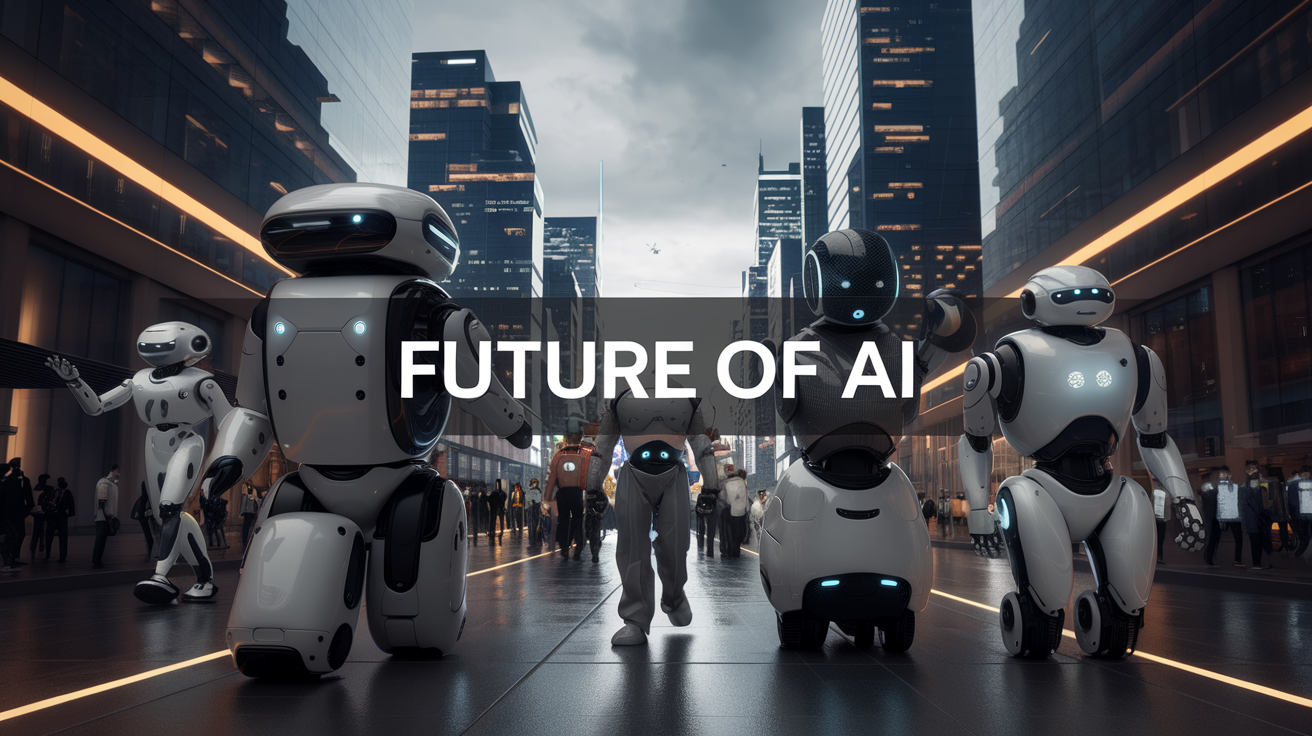Introduction
The rapid advancement of artificial intelligence (AI) and robotics is reshaping our society in unprecedented ways. As we look toward 2030, we anticipate significant milestones that will redefine human interaction with technology. These developments promise to bring both opportunities for innovation and challenges that require careful navigation. This blog post explores the trajectory of AI and robotics, highlighting key predictions from 2024 to 2030.
2024 Predictions – AI’s Current Momentum
GPT-5 and Claude-4 Releases
In 2024, we expect the release of advanced language models like GPT-5 and Claude-4, which will showcase enhanced capabilities in natural language understanding and generation. These models are anticipated to accelerate the pace of AI development despite rising operational costs, as companies invest heavily in refining their algorithms to achieve greater efficiency and accuracy
Rise of Multimodal Models
The integration of multimodal models that can process text, images, and geospatial data will become more prevalent. This shift aims to overcome the limitations of previous systems, enabling more comprehensive analyses and applications across various sectors, including healthcare, education, and entertainment
Robotics Evolution
The robotics landscape will witness significant growth, particularly in humanoid and domestic robots. Companies like Disney and Boston Dynamics are leading innovations that will enhance robot capabilities for personal assistance and entertainment, making them integral parts of daily life by 2024
2025 – The Year of Disillusionment
Plateau in Model Advancements
By 2025, the AI industry may experience a plateau in groundbreaking advancements. While incremental improvements will continue, the lack of revolutionary breakthroughs could lead to disillusionment among stakeholders who expected rapid progress. This period will reveal the real-world limitations of existing AI benchmarks
Increasing Enterprise AI Deployments
Small and medium-sized enterprises (SMEs) will increasingly adopt AI technologies to enhance operational efficiency. However, larger corporations may remain hesitant due to concerns about integration costs and potential disruptions
Expanding Use Cases
AI tools will find their way into everyday business operations, focusing on efficiency and automation. This trend will underline the necessity for organizations to adapt their workflows to leverage AI effectively
2026 – Enterprise-Ready AI Takes Hold
Overcoming the “Trough of Disillusionment”
As we move past the initial disillusionment phase, companies will begin to see the benefits of refined AI models. The emergence of general-purpose AI systems will facilitate broader applications across industries, enhancing productivity and decision-making processes
Practical Applications of Domestic Robots
With decreasing costs for consumer robotics, domestic robots will take on expanded roles in homes and businesses. They will assist with chores, provide companionship, and support elderly care, fundamentally changing household dynamics
Job Market Adjustments
The integration of AI into various sectors will drive shifts in employment patterns. While some jobs may become obsolete due to automation, new roles focused on managing and developing AI technologies will emerge. Preparing the workforce for these transitions will be crucial
2027 and Beyond – AGI and New Paradigms
AGI Milestone Achievements
By 2027, we may witness significant advancements toward achieving artificial general intelligence (AGI). Key industries such as healthcare and finance are expected to lead this charge, utilizing AGI for complex problem-solving tasks previously thought impossible
Creative Disruption in Media
AI-generated content will revolutionize media production, leading to the creation of blockbuster films driven by algorithms. This new form of entertainment could generate substantial revenue streams while also raising questions about authorship and creativity
Political and Economic Implications
The rise of AI technologies will spur debates on ethical considerations such as job protection measures and universal basic income (UBI). Additionally, geopolitical tensions may arise as nations vie for technological supremacy in defense strategies involving AI
2028-2030 – A New Era of Innovation
Commercial Applications of Fusion and Quantum Computing
The convergence of fusion energy and quantum computing with AI is expected to yield breakthroughs across various fields by 2030. These advancements could transform energy production, material science research, and enhance overall AI capabilities
Socioeconomic Shifts
We anticipate a gradual adoption of post-labor economic models as societies begin experimenting with UBI initiatives. This shift aims to address potential economic disparities arising from widespread automation
The Intelligence Age
As AI becomes increasingly integrated into daily life by 2030, society will enter an “Intelligence Age.” This era promises both optimism for enhanced quality of life through technology and challenges related to privacy and ethical governance
Challenges to Watch For
Ethical and Safety Concerns in AI
As innovation accelerates, balancing technological advancement with ethical considerations becomes paramount. Preparing for unintended consequences—such as algorithmic bias or misuse—will require robust regulatory frameworks
Addressing Mass Layoffs
The potential for mass layoffs due to automation necessitates proactive measures such as retraining programs and support systems to help displaced workers transition into new roles within an evolving job market
Risks of Geopolitical Conflicts
AI’s role in military strategies poses risks for global stability. Nations must navigate these complexities carefully to prevent escalation into conflicts driven by technological competition
Conclusion
By 2030, the transformative potential of AI and robotics is set to reshape our world profoundly. Proactive planning for societal shifts is essential as we embrace this new era marked by innovation. As we stand on the brink of what could be a golden age for technology, it is crucial that we address the accompanying challenges thoughtfully.
FAQs
What is AGI, and why is it significant?
AGI refers to artificial general intelligence—machines capable of understanding or learning any intellectual task that a human can do. Its significance lies in its potential to revolutionize industries by performing complex problem-solving tasks autonomously.How soon will domestic robots become affordable?
By around 2026-2028, advancements in technology are expected to reduce costs significantly, making domestic robots accessible to a broader audience.Will AI lead to mass unemployment or job evolution?
While some jobs may be automated away due to AI advancements, new roles requiring different skills are likely to emerge. The focus should be on workforce retraining.How can small businesses benefit from AI in 2025?
Small businesses can adopt AI tools for efficiency improvements in operations such as customer service automation or data analysis without needing extensive resources.What societal changes are expected with AI integration by 2030?
We can expect shifts toward post-labor economic models like UBI initiatives alongside enhanced quality of life through improved healthcare services facilitated by robotics.




